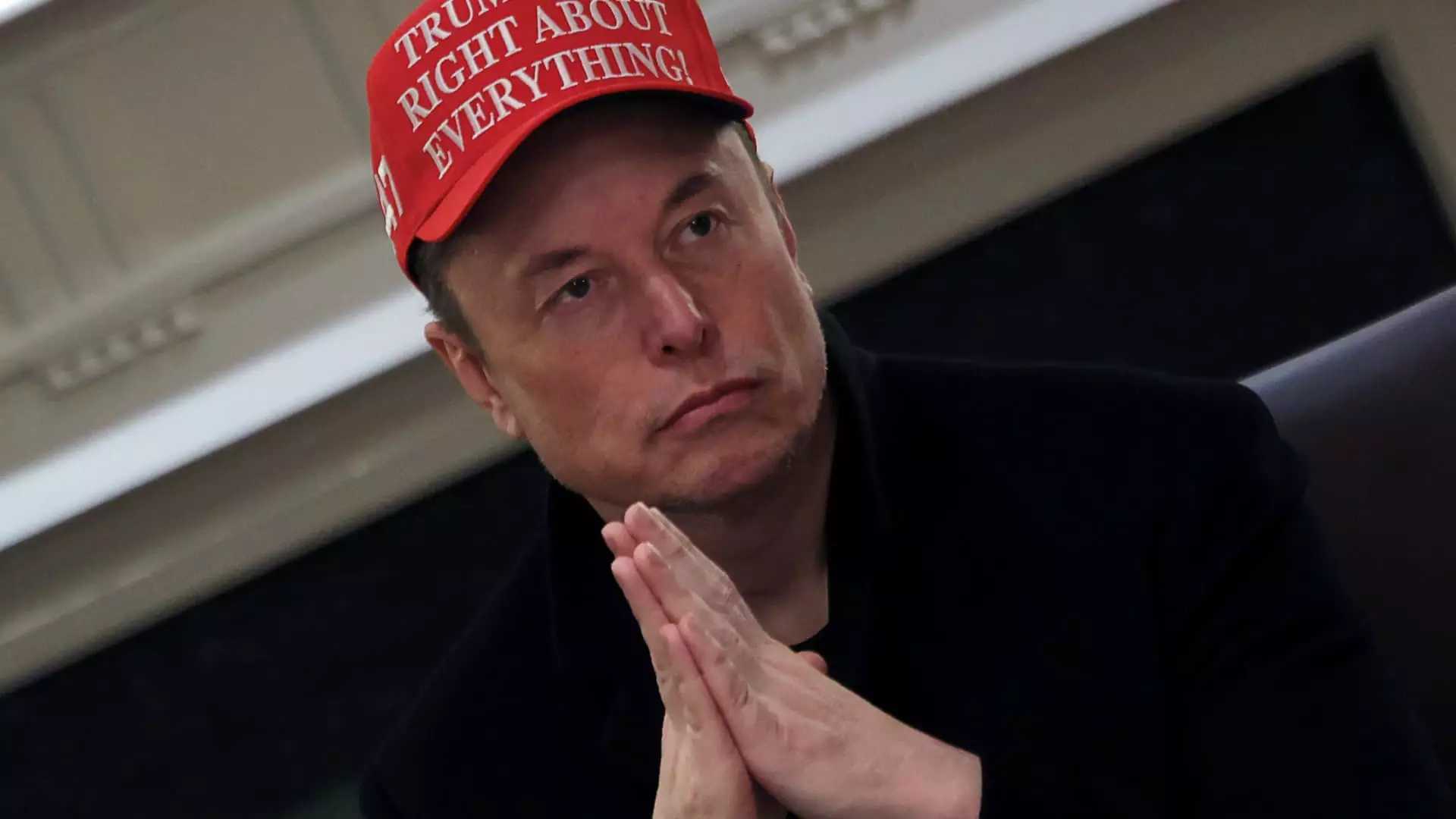Tesla has always been a company that represents electric innovation and a thrust toward sustainable energy, but its recent stock performance paints a starkly different picture. With a staggering 38% plunge this year alone, the electric vehicle (EV) manufacturer is facing an uphill battle that seems to intensify with each pronouncement from the White House. Just a day after experiencing its biggest gain since 2013, the company’s stock fell a remarkable 7.3%, closing at $252.40. These fluctuations reveal the volatile landscape Tesla navigates—one filled with uncertainty and external pressures.
The Market’s Whims: Trump’s Tariff Tango
At the heart of Tesla’s recent turbulence lies President Donald Trump’s shifting tariff policies. On one day, announcements of delayed tariffs led to optimism, with stocks soaring across the board. The very next day, however, the reality of steep tariffs—especially the 145% on Chinese imports—came crashing down, dragging Tesla along with it. This constant whipsaw effect can’t help but evoke a sense of frustration for investors who have placed significant stakes in the company’s future.
The broader implications of these tariffs are monumental. For a company like Tesla, which heavily relies on international sourcing for parts—from batteries to raw materials—such a burden could severely impact margins. Analysts from institutions like UBS and Goldman Sachs have already begun slashing price targets for Tesla, signaling a growing pessimism regarding the company’s profitability while competing in an increasingly crowded EV market.
Brand Erosion and Market Conditions
Tesla isn’t just grappling with financial woes; it also faces a pressing issue of brand deterioration. This is underscored by a decline in deliveries and even protests at its facilities, suggesting deeper rattling of consumer confidence and employee morale. During a time that has seen competitors like Rivian and Lucid Motors make serious inroads into Tesla’s market share, the automaker cannot afford any slack in either product quality or public perception.
Just as troubling is Tesla’s dwindling sales figures across Europe, as reported by the European Automobile Manufacturers’ Association (ACEA). Europe, long seen as a lucrative market for EVs, has turned into a battleground for Tesla. As restrictions and tariffs loom, the added operational costs could make it difficult for the company to retain competitive pricing. With traditional car manufacturers ramping up their EV offerings, Tesla might soon find itself at a considerable disadvantage if consumers perceive it as a less reliable or more expensive choice.
Musk’s Dual Identity: Advocate or Liability?
Elon Musk’s role as both CEO and an advisor to the Trump administration further complicates Tesla’s narrative. While his relationship with the president may afford him some clout, it also brings unwanted scrutiny. Musk’s public denunciation of Trump’s trade advisor as a “moron” reveals the very public internal discord that could further alienate both investors and consumers who favor stability and rational discourse over erratic behavior and harsh confrontations.
This dichotomy mirrors the tumultuous nature of Tesla’s corporate and public image. With market analysts and the investing community grappling with Tesla’s performance, the company’s reputation is on a razor’s edge. Musk’s vocal support of certain hardline policies while simultaneously lamenting their impacts could lead to a confused consumer base—a dangerous path for any company aiming for sustained growth.
The Short Seller’s Paradise
Lastly, it’s important to note how these erratic shifts have created a feeding ground for short sellers. With Tesla’s stock listing as one of the top four equities for short-selling, the volatility becomes a cyclic spectacle. The 80.5 million shares shorted (valued at approximately $17.9 billion) mean that professionally betting against Tesla’s rise has become almost systematic. The excitement of short sellers getting burned on a rally quickly returned to vindication with Thursday’s sell-off, creating a toxic cycle of market manipulation and investor distress.
Tesla’s current predicament is reminiscent of a high-stakes game of poker—high rewards coupled with equally high risks. Stakeholders must now reckon with the reality that this once seemingly invincible company is caught in a perilous tightrope act, balancing between innovation and insolvency while external factors loom ominously over its operations. Investors, therefore, should remain cautious as they assess both the emotional and fiscal toll of Tesla’s future amidst escalating trade war complexities.

